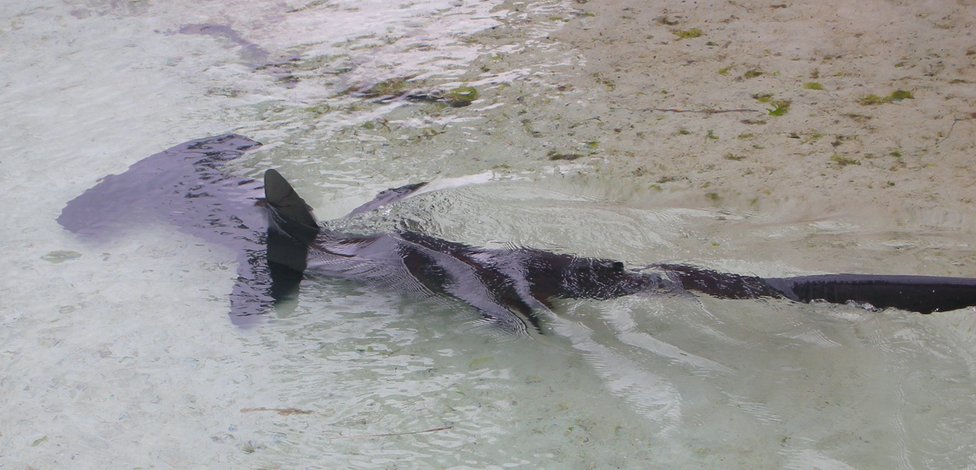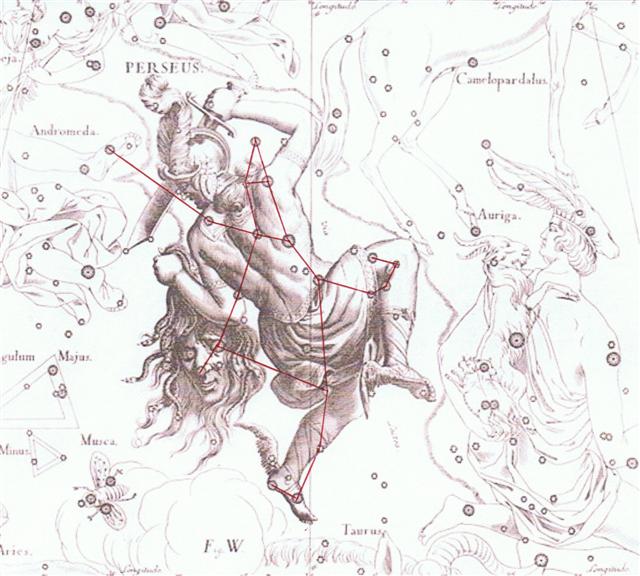There are bascially 2 kinds of dark shadows down in the sea, the peaceful ones and the dangerous ones.
Likewise could there be 2 different sorts of times outside the ordinary calendar- those days which could be counted - viz. dark nights inserted between the cycles in order to enable births and other dark nights because of needed amputations:  There must be correspondences:
If one had to explain why there were more nights beyond those 360 which had been correctly counted to, then addition was a good method. If one had to explain why the solar year did not arrive in truth in January 1, then there ought to be some dark force to blame. Tır ruled Tuesday, the day of Mars. He had '2 hands' of fire 'digits', one for when he was close to Earth and the other, fainter, for when he was far away. And sometimes he made strange retrograde expeditions, showing he was a force to count with, a force of life / light:
His right hand (which comes first) was bitten off by 'Fenrir'. 5 * 10 = 50 could be Tır's first set of 50 days (with 1 'finger' for 10 days), because the heliacal rising of Algenib Persei occurred (in rongorongo times) in RA day 50.0 (i.e. May 10, which can be written 5-10):
His left hand would then stretch from May 10 (130) to Gregorian day 180 (June 29), with heliacal Sirius in the following day marking he break ('joint') in time.
The manzil dates could, after all, be informative. Syrma 7 is 177 (= 6 * 29½) days counted from the beginning of the calendar, but if we count properly - according to time - then the measure 177 will be full-filled already at the end of Syrma 6 (because Sheratan 1 should mean the first day after 'day zero' is finished). Similarly would the end of Alrescha 9 be where the measure 360 is completed. But if heliacal Sirius in June 30 is a 'zero' day, then there could be 4 more 'outside' days before that, i.e. from the day after the nakshatra position of Canopus (= Gregorian day 177). From Canpous up to and including Sirius there are 5 days - similar to the days when Nut gave birth - and therefore a new year ought to begin with July 1 (182 = 364 / 2). Perhaps the moko glyphs indicated that time was ripe to go down and invigorate Mother Nature - and possibly also to reverse from nakshatra to heliacal view (because a new Sun would appear). ... As Tangaroa was about to leave the shores, his grand-children consulted together as to how they might save themselves. For Tangaroa had begotten Punga, and Punga had begotten Ika tere, the father of fish, and Tu te wanawana, the father of lizards and reptiles. These two could not agree where it was best to go to escape the storms. Tu te wanawana and his party, shouting into the wind, cried 'Let us all go inland,' but Ika tere and his party cried 'No, let us go to the sea.' Some obeyed one and some the other, and so they escaped in two parties. Those of Tu te wanawana hid themselves on land, and those of Ika tere in the sea. This is what is called, in the ancient traditions of our people, 'The Separation of Tawhiri matea', and it is put in this fable: The Shark was for going to the sea, but the Lizard was for going inland. Shark warned Lizard, 'Go inland, and the fate of your race will be that when they catch you and before they cook you, they will singe your skins off over a lighted wisp of fern.' Lizard answered, 'Go to the sea, and the fate of your race will be that when they serve out baskets of food to each person, you will be laid on top to give a relish to it.' So they fled their separate ways, the fishes in confusion to the sea, and the lizards and reptiles to the little hiding places in the forests and the rocks. And for this reason Tangaroa, enraged that some of his offspring deserted him and were sheltered by the forests, has ever since made war on Tane, who in return has helped those who are at war with Tangaroa. So the sea is forever eating at the edges of the land, hoping that the forest trees will fall and become his food, and he consumes the trees and houses that are carried down to him by floods ... Polynesia is fundamentally a tropical land. But some went north, e.g. to Hawaii, and some went south, e.g. to Easter Island - to places outside the tropical belt where people could live forever under the life-giving rays of the Sun. Hawaii was far away up in the northern 'sea' and Easter Island far down in the 'underground'. The Shark went north and Lizard went south. | |||||||||||||||||||||||||||||||||||||||||||||||||||||||||||||||||||||||||||||||||||||||||||||||||||||||||||||







